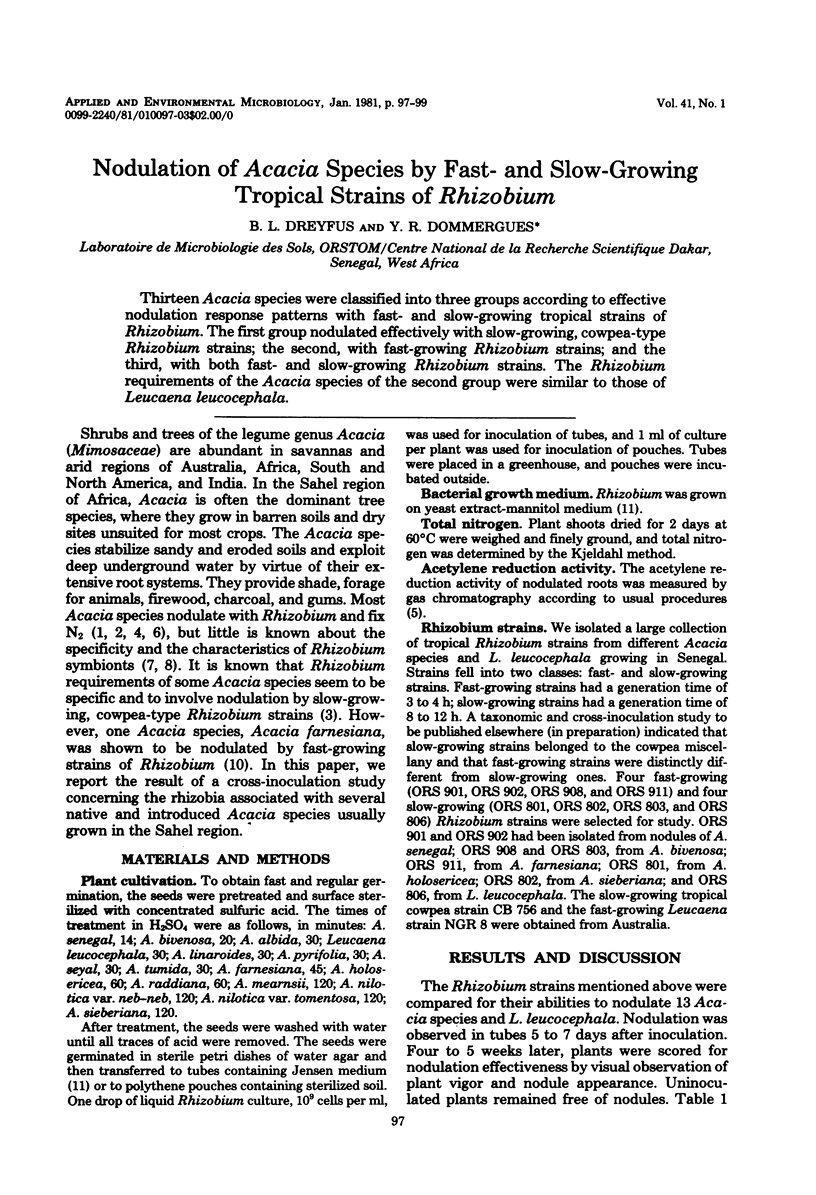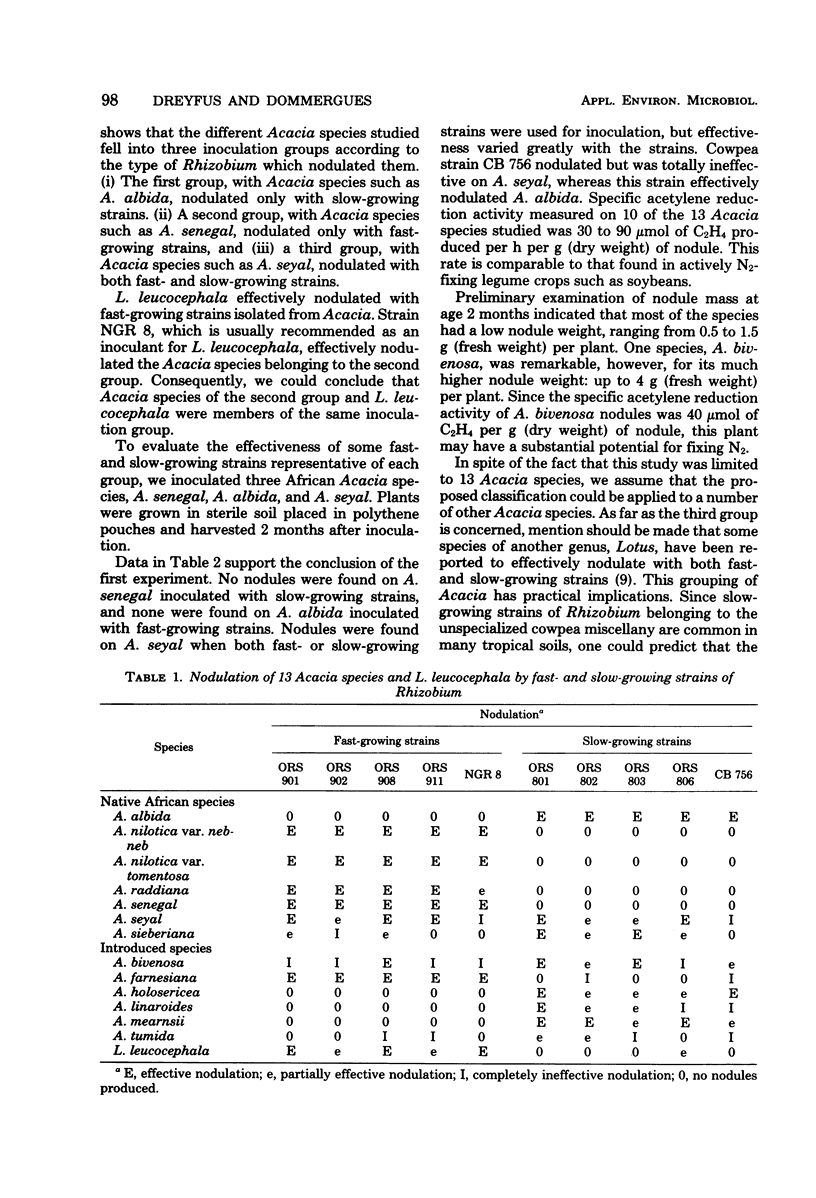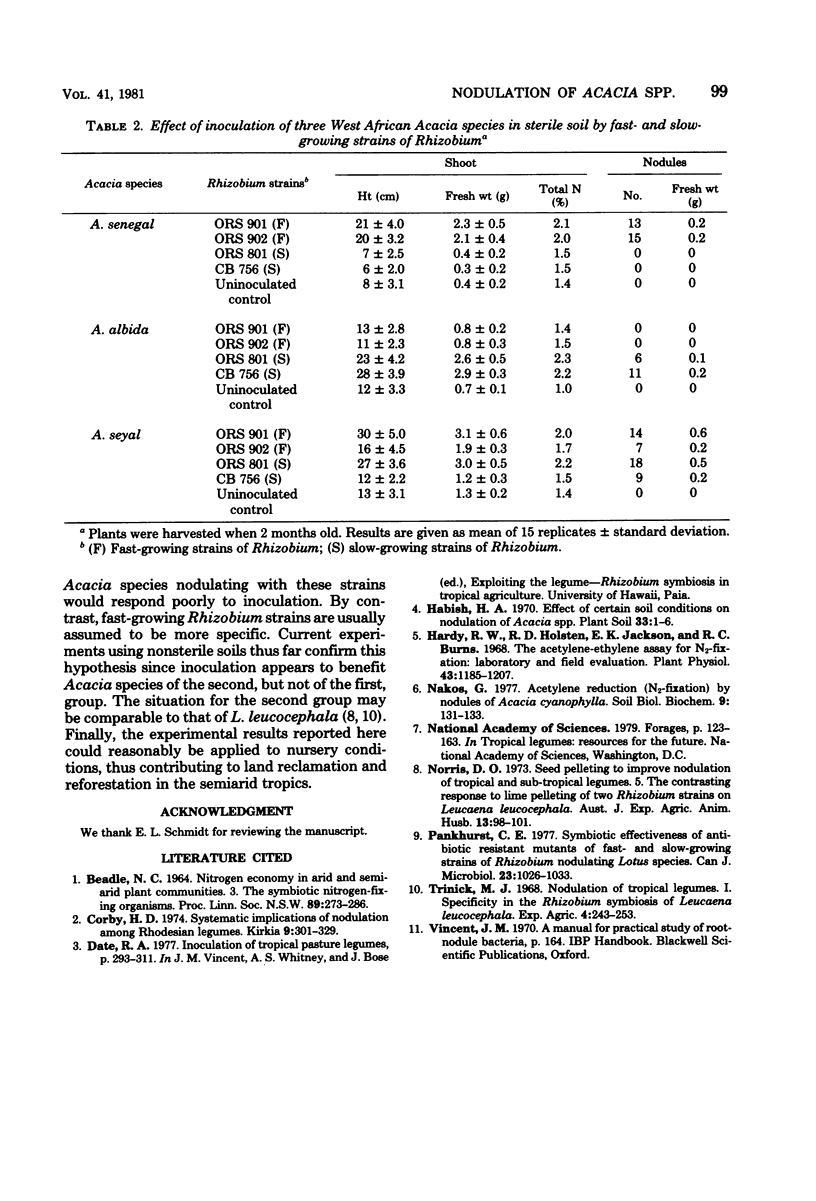Abstract
Thirteen Acacia species were classified into three groups according to effective nodulation response patterns with fast- and slow-growing tropical strains of Rhizobium. The first group nodulated effectively with slow-growing, cowpea-type Rhizobium strains; the second, with fast-growing Rhizobium strains; and the third, with both fast- and slow-growing Rhizobium strains. The Rhizobium requirements of the Acacia species of the second group were similar to those of Leucaena leucocephala.
Full text
PDF


Selected References
These references are in PubMed. This may not be the complete list of references from this article.
- Hardy R. W., Holsten R. D., Jackson E. K., Burns R. C. The acetylene-ethylene assay for n(2) fixation: laboratory and field evaluation. Plant Physiol. 1968 Aug;43(8):1185–1207. doi: 10.1104/pp.43.8.1185. [DOI] [PMC free article] [PubMed] [Google Scholar]
- Pankhurst C. E. Symbiotic effectiveness of antibiotic-resistant mutants of fast- and slow-growing strains of Rhizobium nodulating Lotus species. Can J Microbiol. 1977 Aug;23(8):1026–1033. doi: 10.1139/m77-152. [DOI] [PubMed] [Google Scholar]


